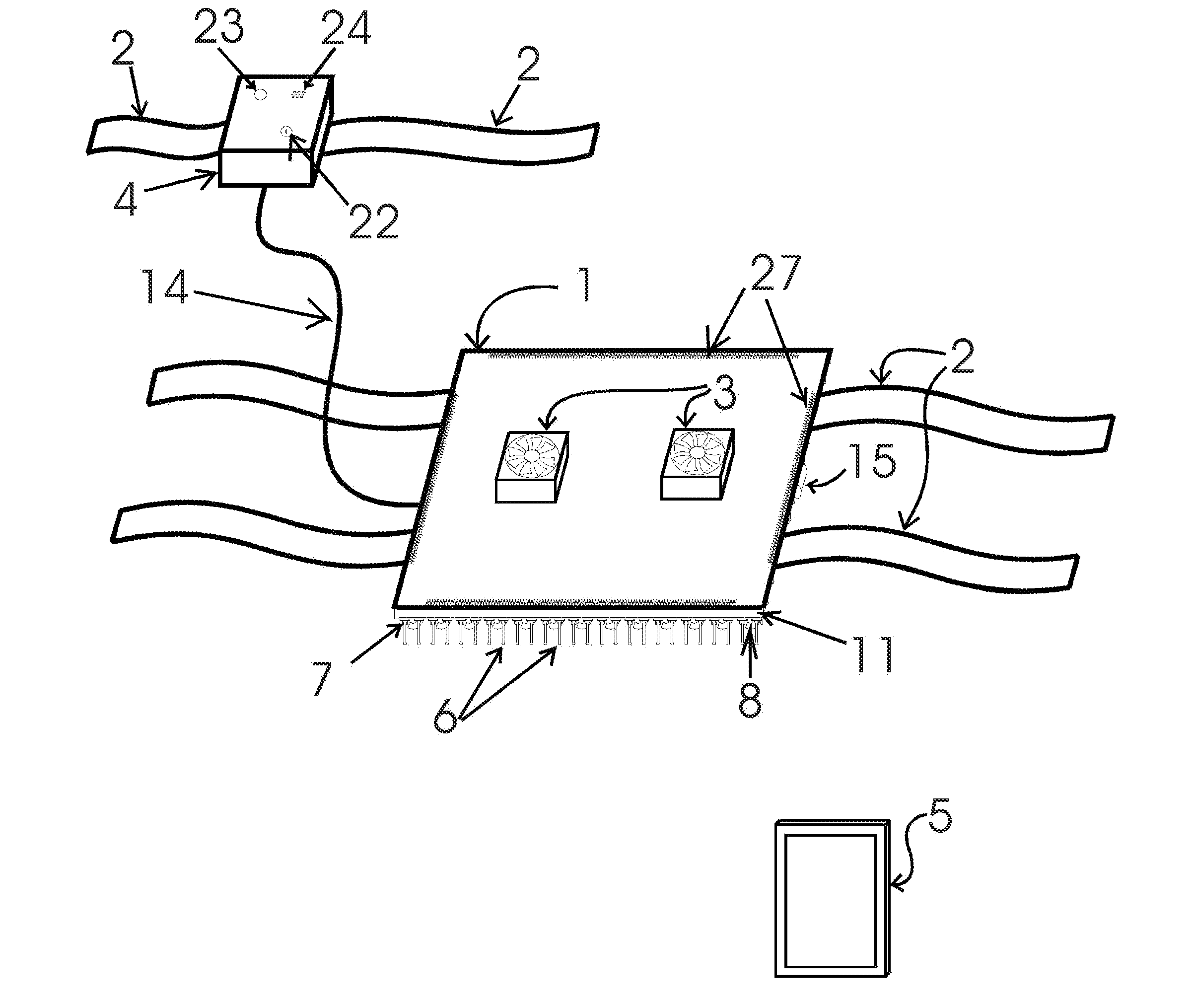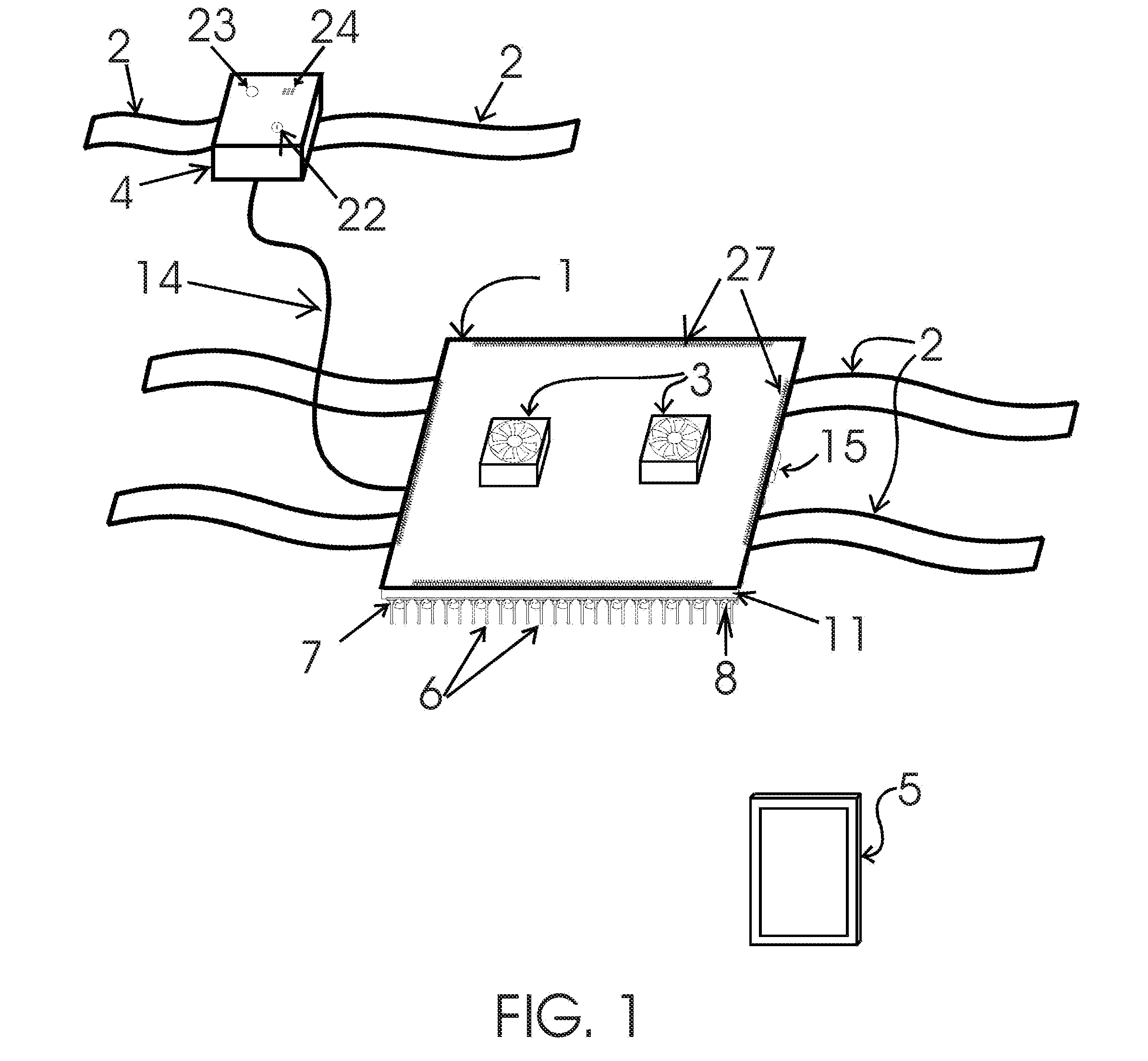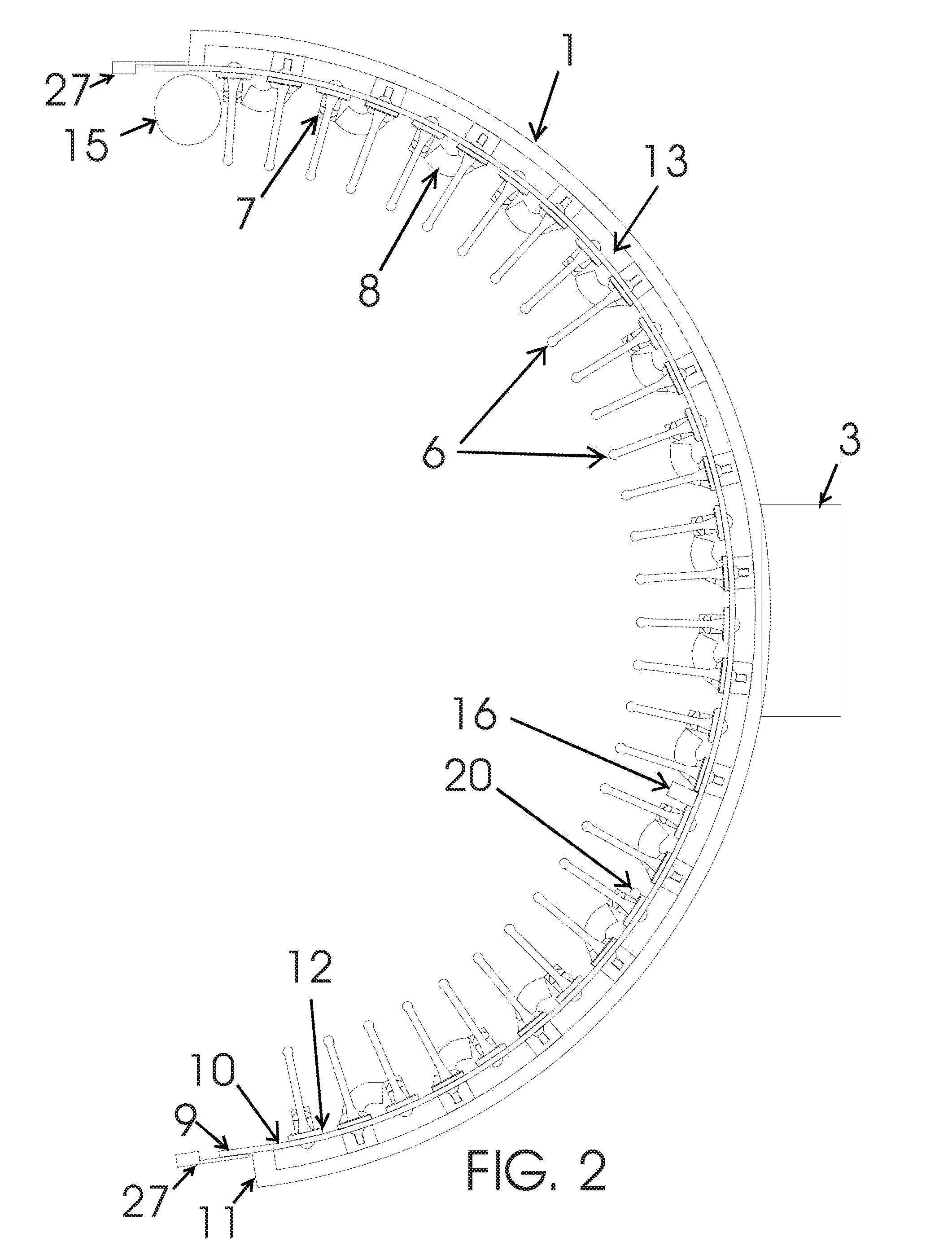Flexible, wearable therapeutic laser array
a laser array and flexible technology, applied in the field of phototherapy, can solve the problems of not being able to easily transport the lllti design discussed above, cumbersome cooling apparatus to keep the laser from overheating, and not being able to apply an even and precise dosag
- Summary
- Abstract
- Description
- Claims
- Application Information
AI Technical Summary
Benefits of technology
Problems solved by technology
Method used
Image
Examples
Embodiment Construction
[0030]The following references to the drawings are discussed in the narrative below.[0031]1 Stretchable, flexible closed cell membrane[0032]2 Stretchable straps with hook and loop fasteners[0033]3 High pressure fan with speed control and air filter[0034]4 Power supply and computer control with wireless communication[0035]5 Touch screen computerized device with wireless communication[0036]6 Standoff post[0037]7 Semiconductor laser diode and lens set[0038]8 Cooling air tube and spacer[0039]9 Flexible, non-stretchable membrane[0040]10 Flexible membrane with bonded flat braided and / or non-braided electrical conductors[0041]11 Narrow, stretchable, flexible closed cell membrane[0042]12 Flexible membrane washer[0043]13 High pressure air cavity[0044]14 Electrical cable for power and sensor data communication[0045]15 Capacitive proximity sensor[0046]16 Infrared radiation sensor[0047]17 Collimating lens[0048]18 Plano-concave lens[0049]19 Semiconductor laser diode[0050]20 Temperature sensor[00...
PUM
 Login to View More
Login to View More Abstract
Description
Claims
Application Information
 Login to View More
Login to View More - R&D
- Intellectual Property
- Life Sciences
- Materials
- Tech Scout
- Unparalleled Data Quality
- Higher Quality Content
- 60% Fewer Hallucinations
Browse by: Latest US Patents, China's latest patents, Technical Efficacy Thesaurus, Application Domain, Technology Topic, Popular Technical Reports.
© 2025 PatSnap. All rights reserved.Legal|Privacy policy|Modern Slavery Act Transparency Statement|Sitemap|About US| Contact US: help@patsnap.com



